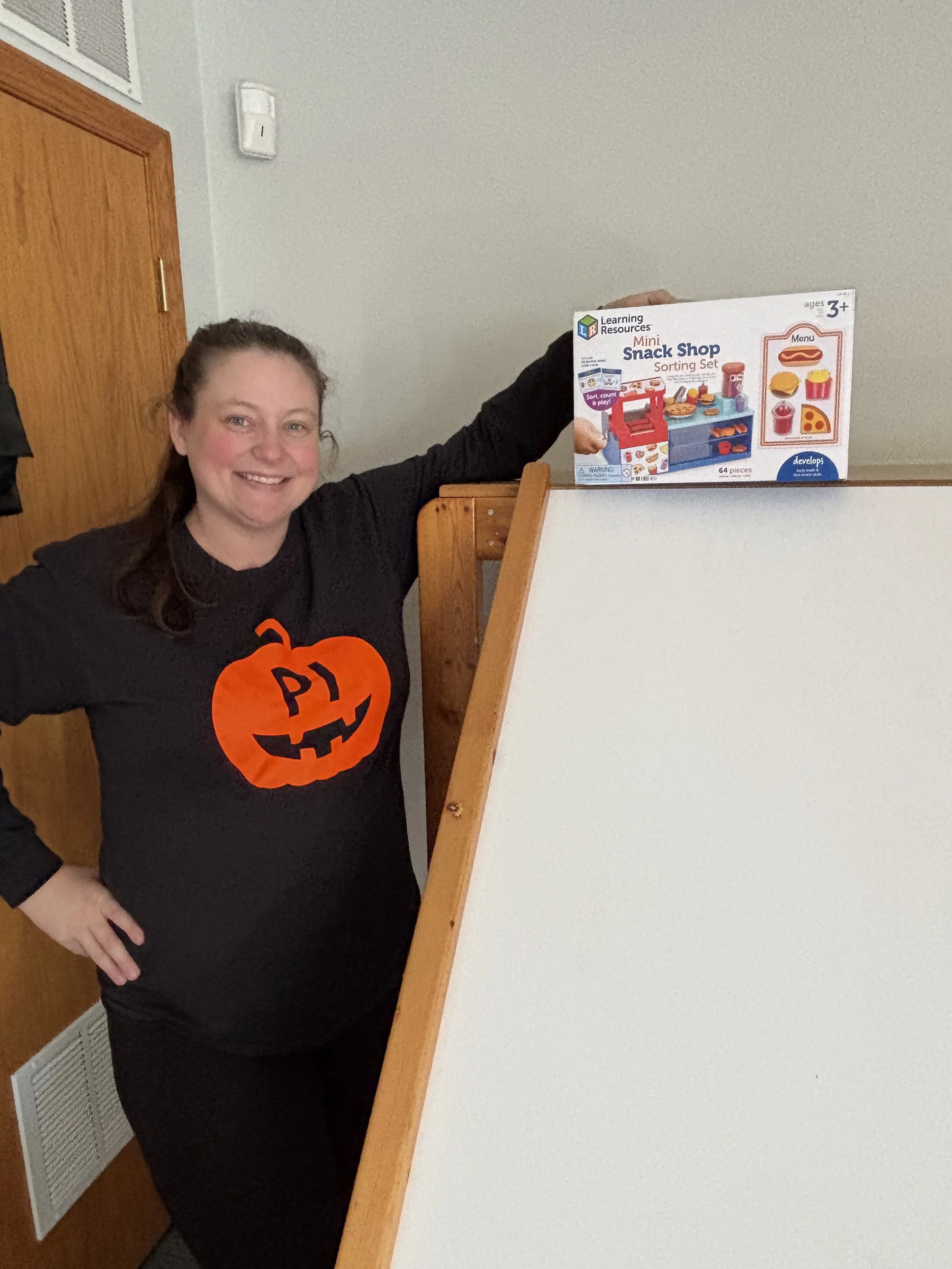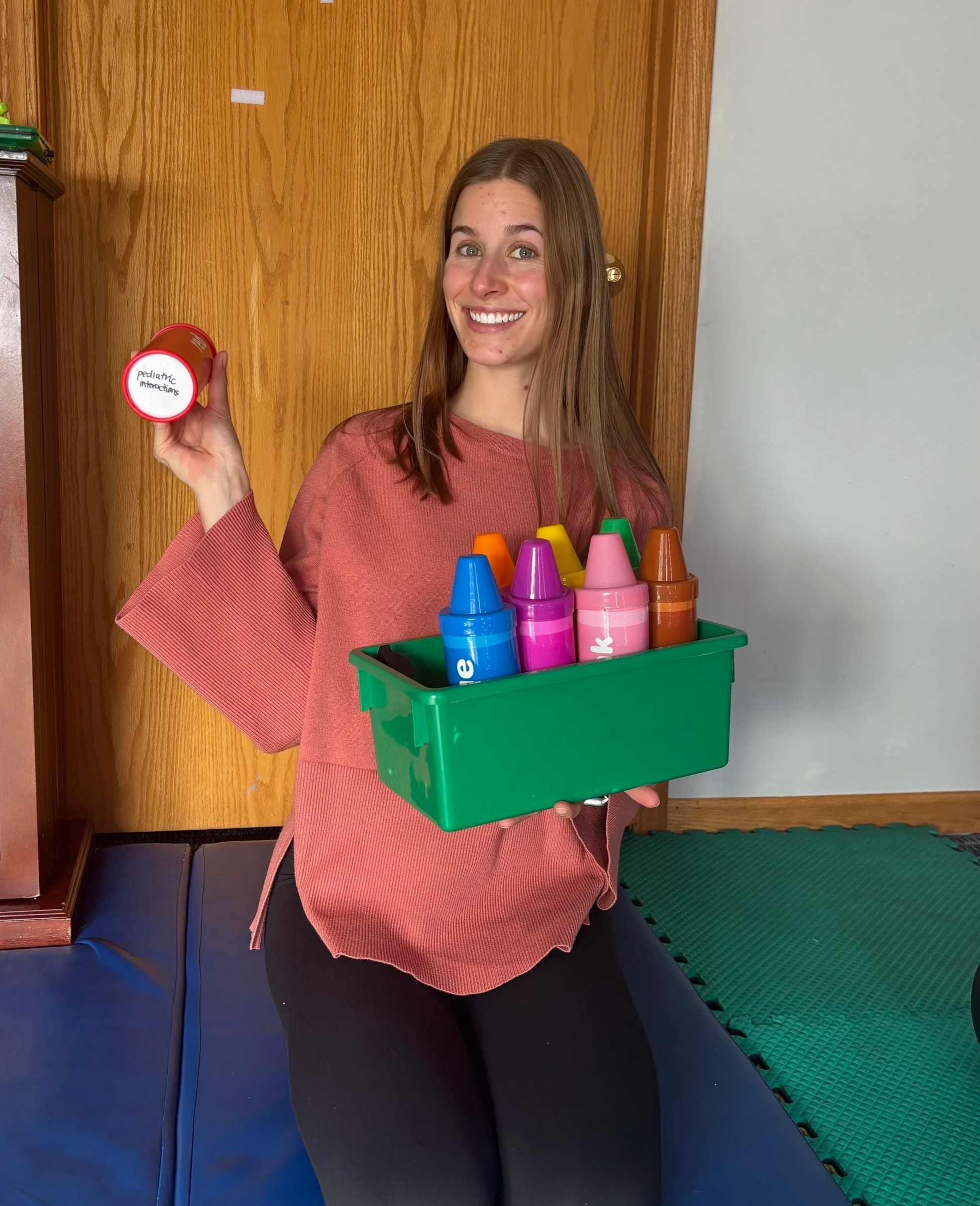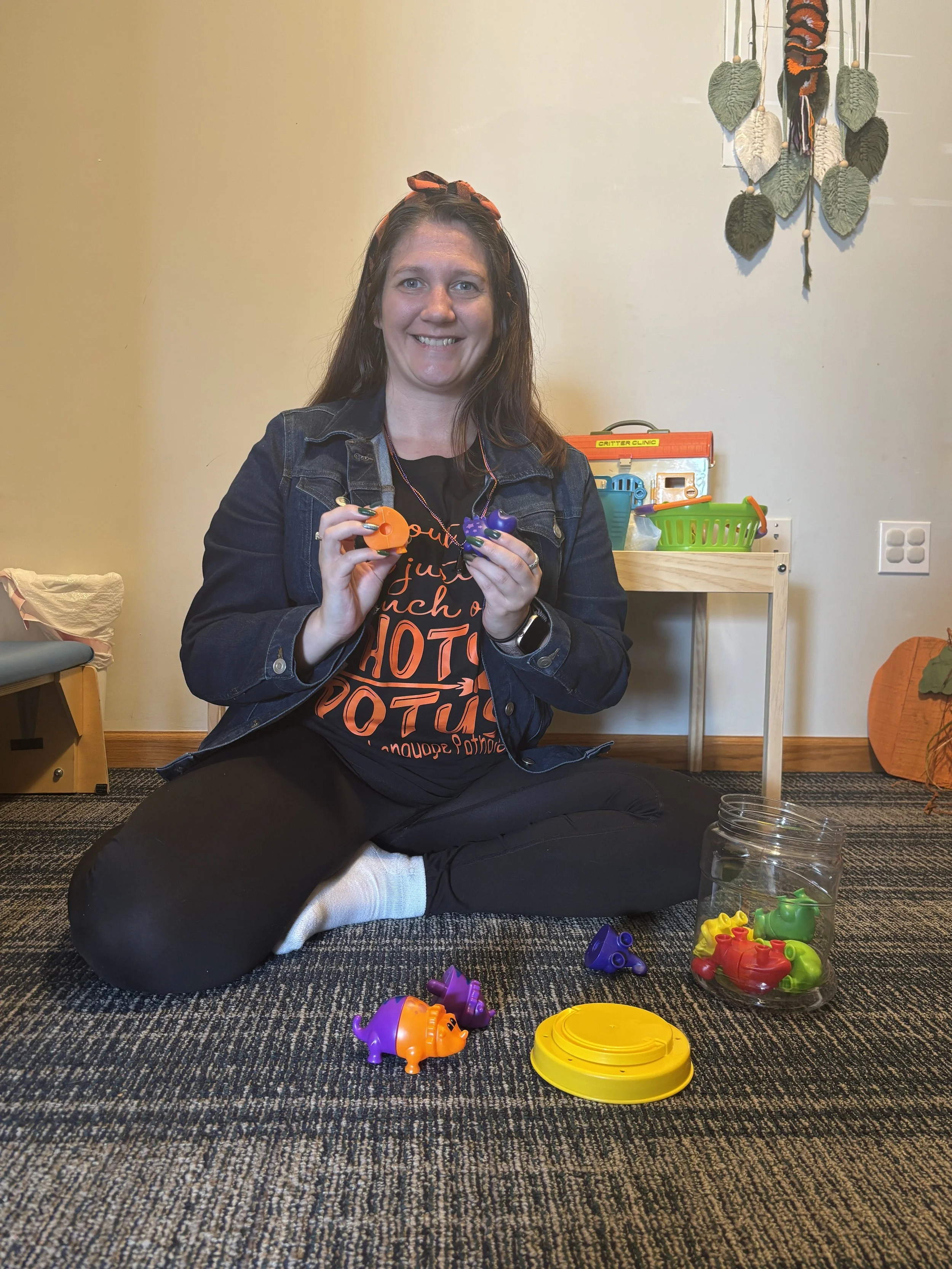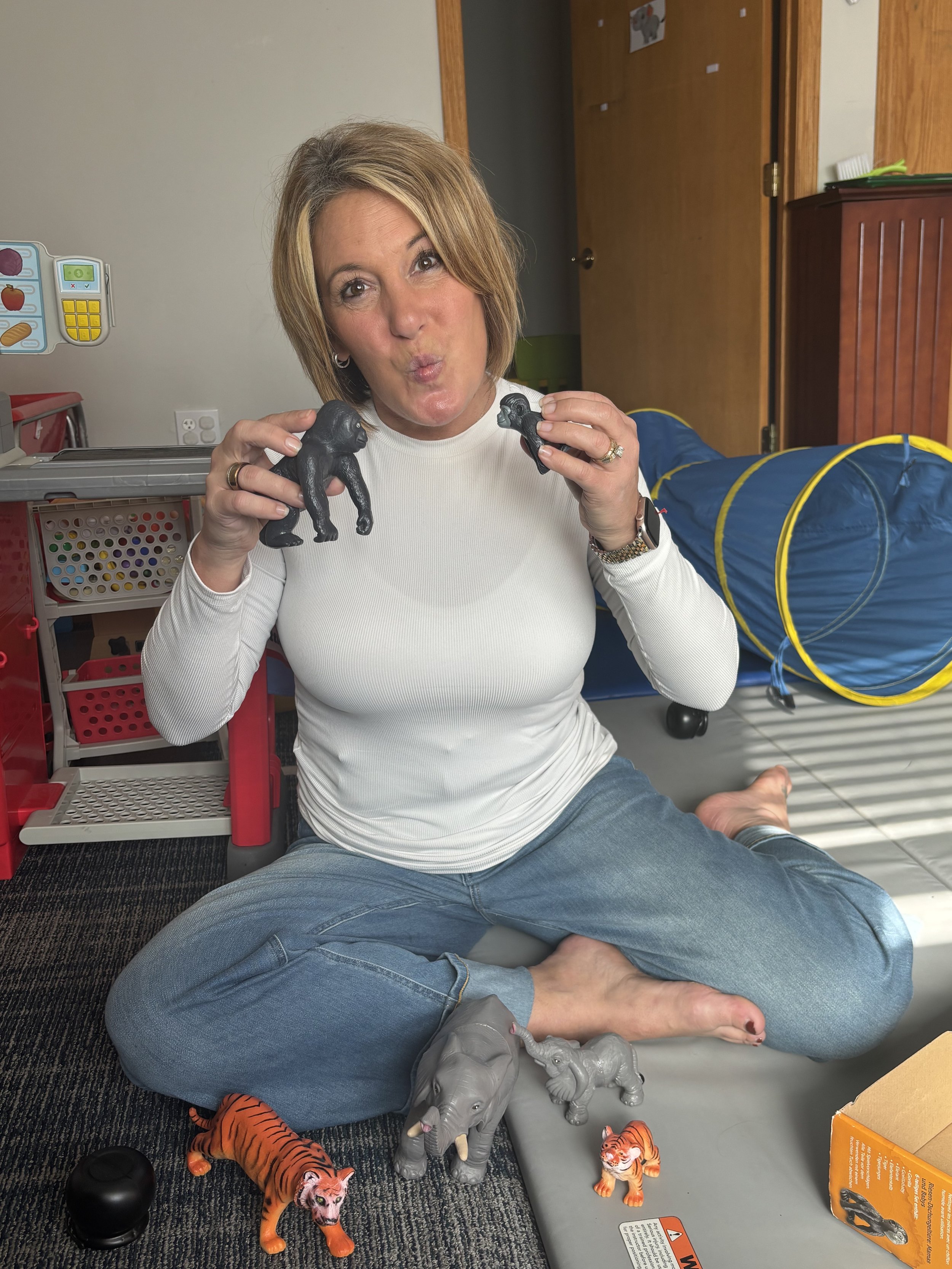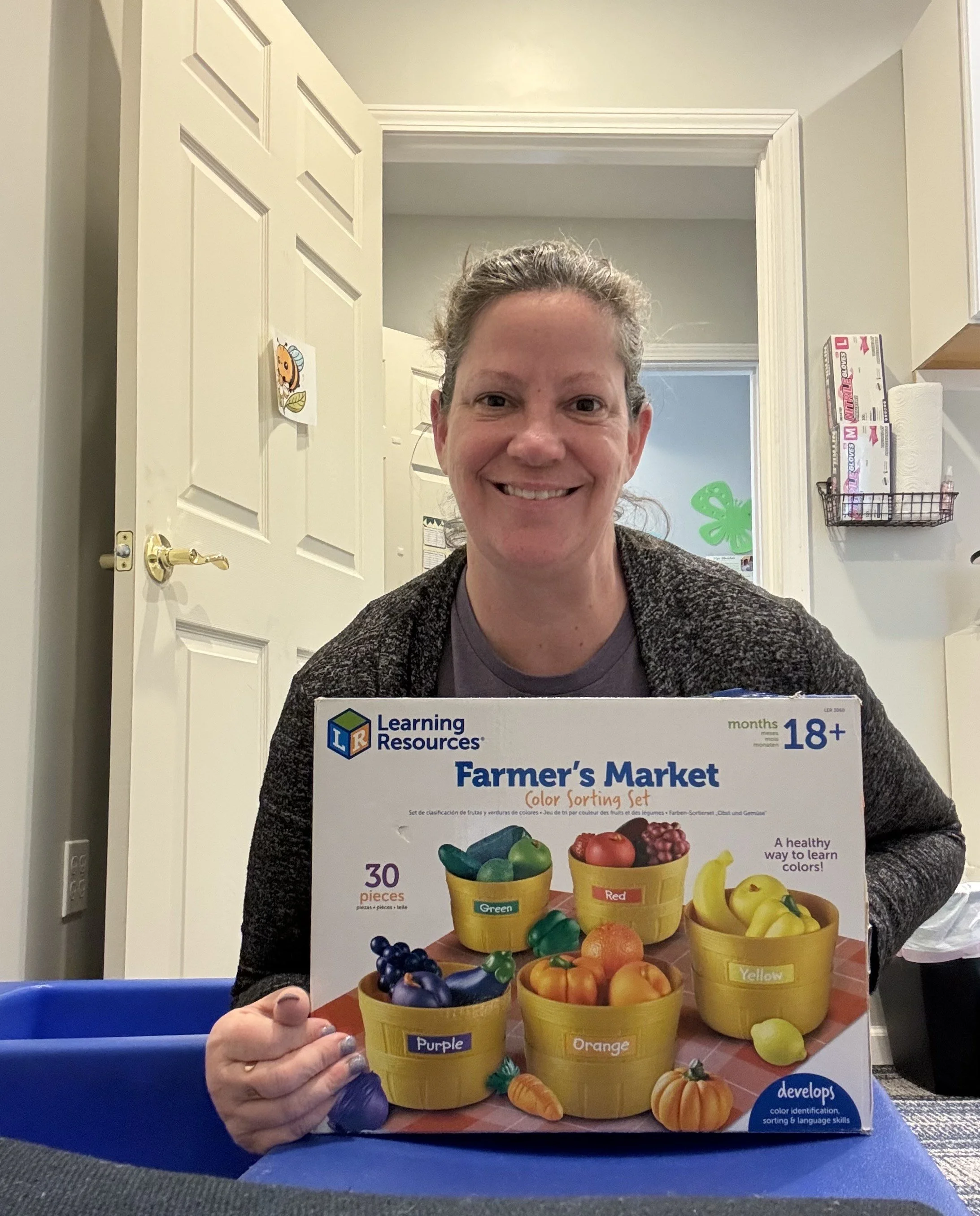Our Therapists’ Favorite Toys for Holiday Gifts to Support Learning Through Play!
As the holidays approach, families often ask our therapists for toy recommendations that are both fun and purposeful. Toys can be powerful tools to help children develop speech, language, social, and feeding skills in fun, natural ways. The best toys aren’t always the most flashy or costly. They spark imagination, encourage communication, and bring families together.
Here are some of our favorite Learning Resources (and others) toys—and a few ideas to help you “play with purpose” at home! These are great gift ideas for any child. You can also borrow many of them from Banana Borrowers Toy Lending Library.
Ms. Alyssa loves the Mini Snack Shop to help kids pretend while following directions and growing their vocabulary!
Following Directions: Take turns “ordering” food items. (“Can I have a hot dog with ketchup or without a bun?”)
Concepts & Counting: Ask for “three snacks” or foods that are with or without certain toppings.
Pretend Play: Add dolls or action figures that “eat” the food. Practice turn-taking, conversation, and expressive language!
Ms. Alex loves Sorting Crayons to practice sorting, describing, and speech sounds!
Categories: Sort items by color, food, or animals.
Language Development: Build short phrases (e.g., “blue car,” “big apple”)—great for children learning to combine words.
Articulation: Find items with your child’s target sound and make up silly stories or sentences using them!
Ms. Beth loves 1-2-3 Build It! (Vehicles or Robot) to build imagination and language!
Following directions: Practice listening to step-by-step instructions.
Concepts: Use words like “on,” “under,” “next to,” or “turn around.”
Verb Vocabulary: Describe what you are doing (“connect,” “build,” “turn,” “drive!”).
Turn-Taking: Take turns choosing or adding parts to encourage social language.
Ms. Gail loves Rainbow Dino Mix & Match to combine learning about colors and numbers with pretend play!
Matching Skills: Find dinos with matching colors or numbers.
Action Words: Make your dinos stomp, jump, or roar!
Pretend Play: Create stories about where your dinosaurs live and what they eat.
Ms. Siiri loves Nesting Fruits to make Silly faces while learning about emotions and language!
Feelings: Identify how each fruit “feels” by its face—happy, sad, silly, or surprised.
Pretend Play: Give each fruit a “personality” and act out little stories.
Language: Practice labeling fruit names and facial features.
Food Exploration: Talk about how each fruit looks, feels, and tastes!
Ms. Modupe loves Pop the Pig to build speech, turn-taking, and fun routines!
Articulation: Name the pig or the burger using your child’s sound target. (“P-Pig eats pizza!”)
Pretend Play: Run a “burger restaurant” or make it a feeding game.
Following Directions: “Roll the dice and feed him the red burger!”
Social Language: Practice phrases like “Your turn,” “Let’s roll,” and “I want more!”
Ms. Sarah loves Jumbo Animals as big fun for little learners!
Speech Practice: Make animal sounds (“moo,” “roar,” “baa”).
Language: Compare animals by size and color (“big elephant,” “small zebra”).
Action Words: Act out what animals do—run, eat, sleep, jump.
Pretend Play: Create a zoo, farm, or safari adventure!
Ms. Laura loves Farmer’s Market. She enjoys meeting families at our local farmer's market. She also loves seeing kids have fun in therapy with this toy!
Play pretend: Take turns being the farmer or shopper—practice asking, sharing, and using polite words (“Can I have an apple, please?”).
Make it a kitchen adventure: Pretend to cook, serve or taste foods together.
Talk About What You See: Name the foods, describe their color, size, or shaper.
Why We Love These Toys
These toys boost communication, creativity, and connection. These skills are valuable beyond playtime! Whether your child is working on sounds, vocabulary, or social language, these toys help make learning fun and meaningful.
Want more ideas or guidance on how to support your child’s speech and language at home? Visit www.pediatricinteractions.com or talk to your child’s therapist to find the best toys and ways to “play with purpose.”

